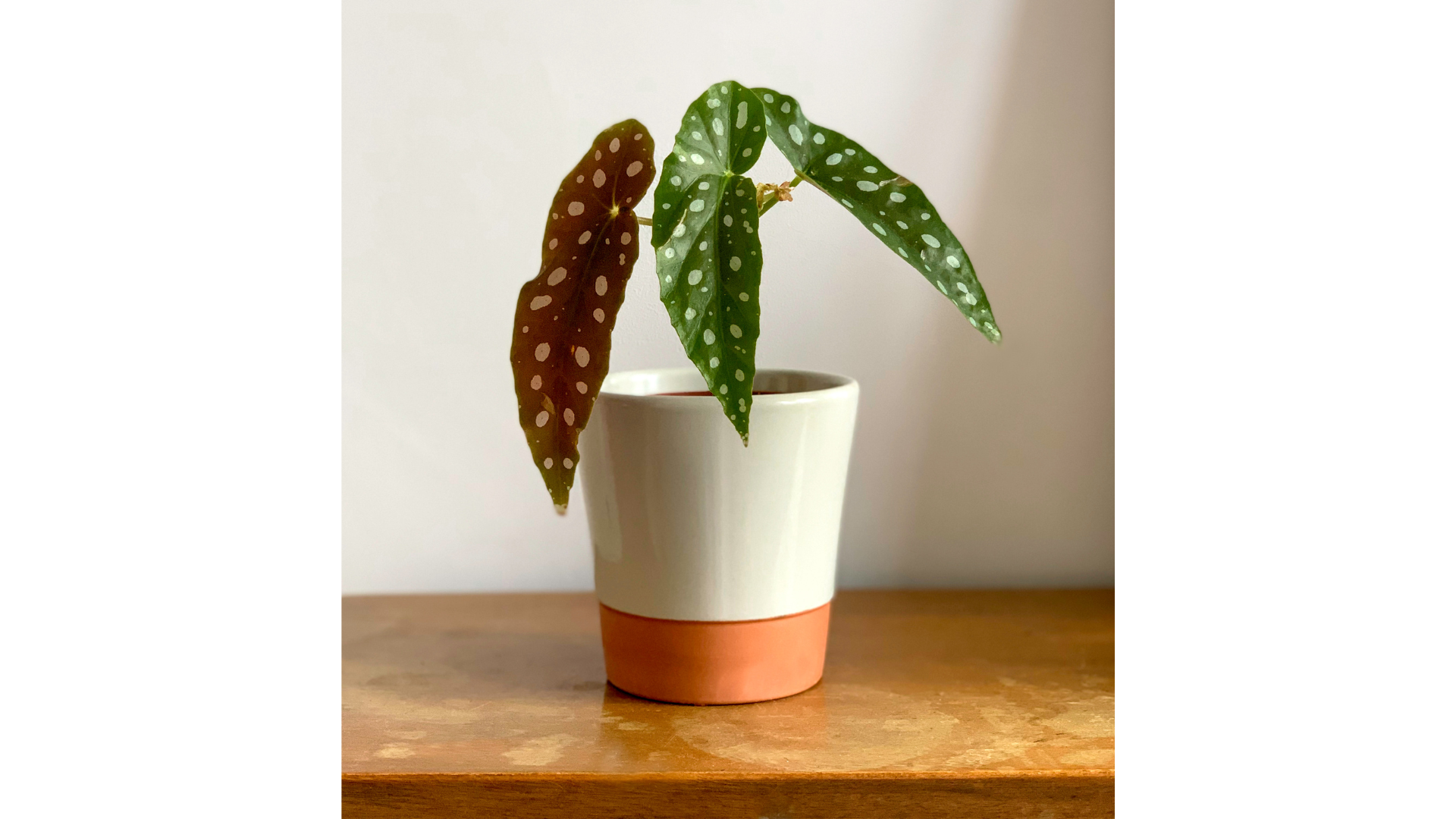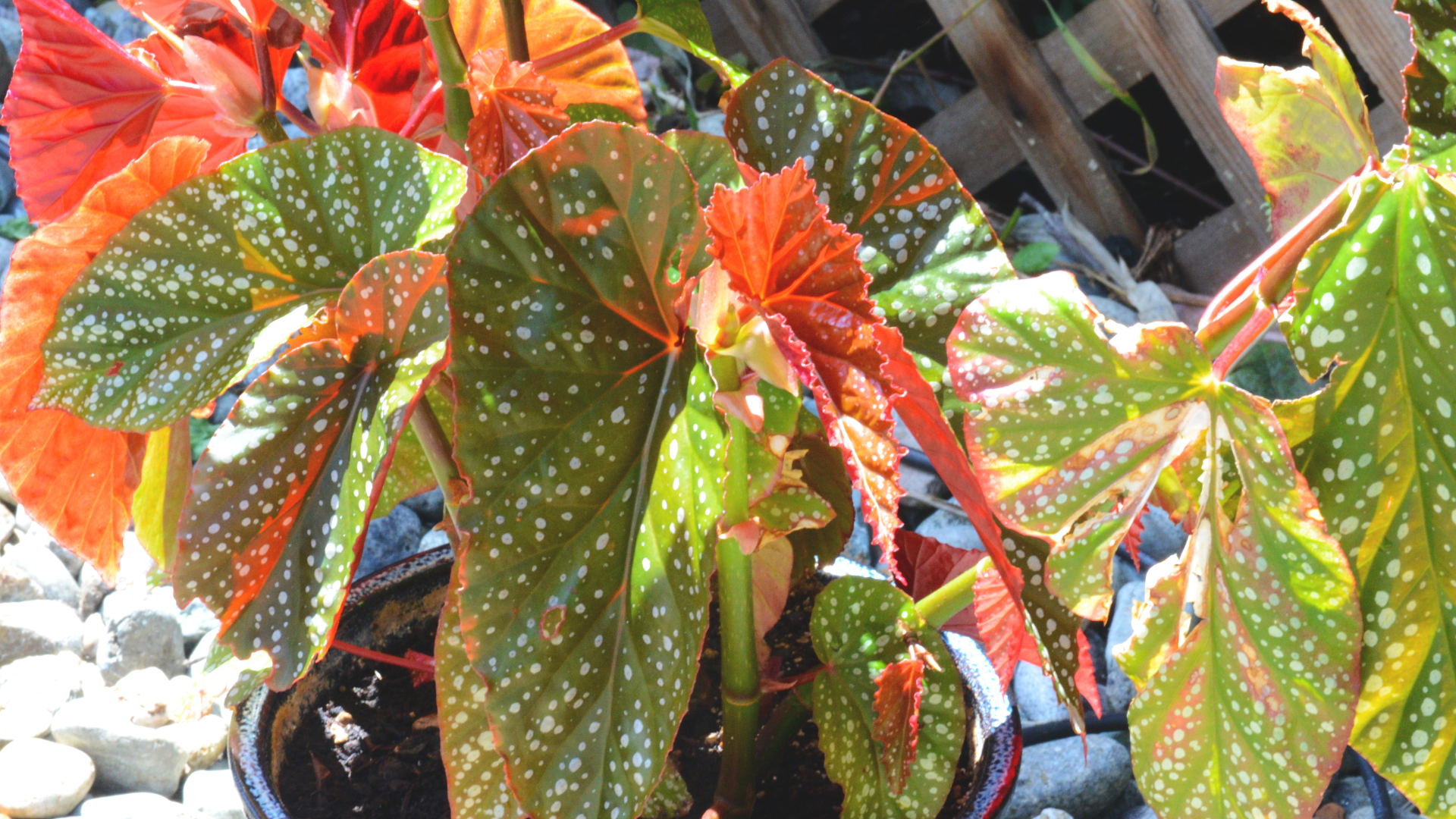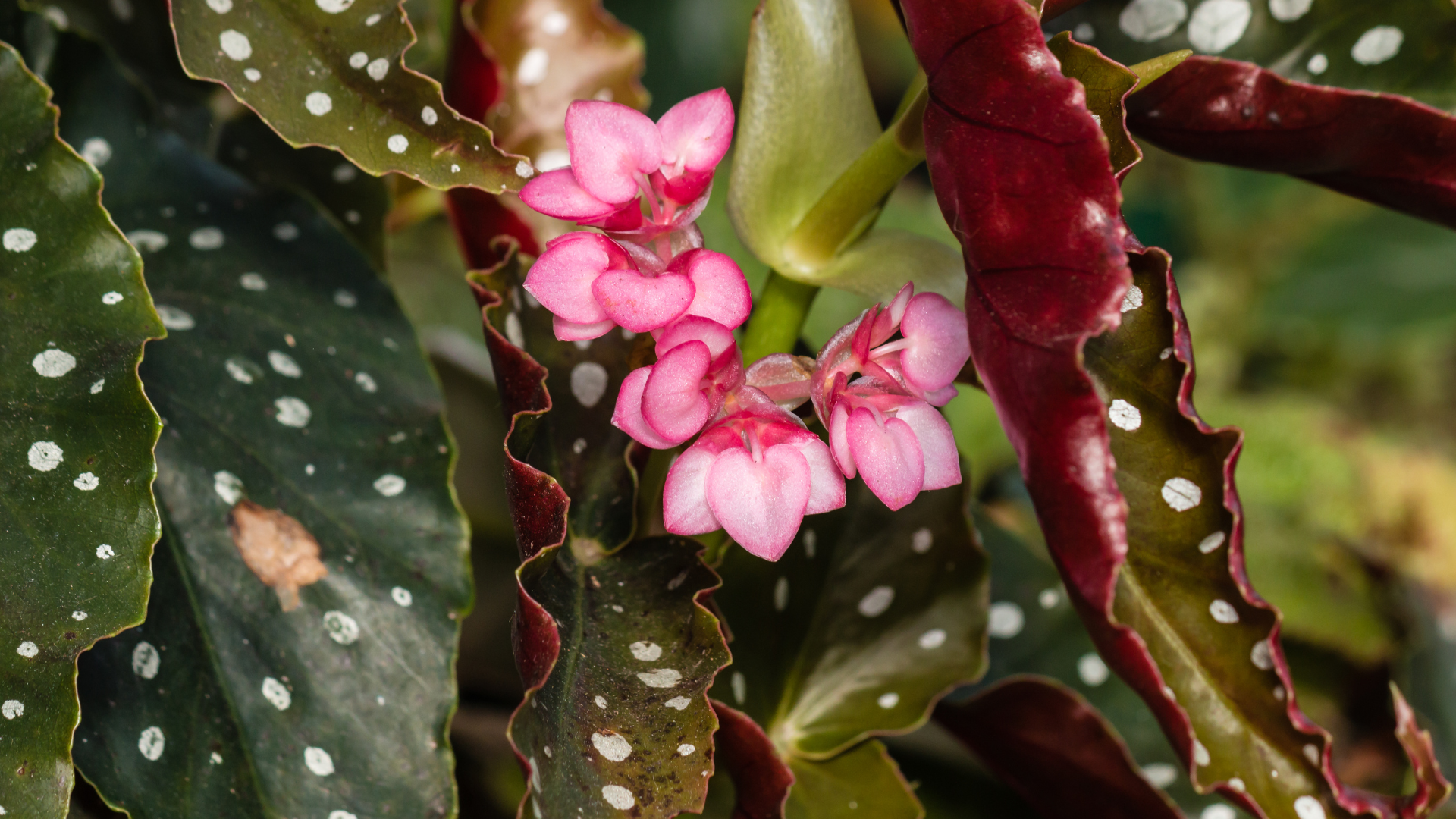Angel Wing Begonia Plant Guide
Your complete guide to nurturing a thriving Angel Wing Begonia
Your Plant's Story
This stunning Angel Wing Begonia started its journey as a cutting from one of our beloved mother plants in our greenhouse. Each plant carries the dramatic genetics and flowering spirit of its parent, carefully propagated and nurtured until ready to bring tropical rainforest magic to its new home.
The Magic: Named for their distinctive wing-shaped leaves, these beauties are actually cane begonias that can bloom almost year-round with clusters of pendulous flowers in shades of pink, coral, white, or red. The speckled foliage with silvery spots and red undersides creates living art that changes with the light throughout the day.
From Brazilian rainforests to your space: Your Angel Wing Begonia's ancestors evolved growing in the understory of South American rainforests, developing their dramatic leaves and continuous blooming habit to thrive in humid, filtered light beneath the canopy.
Hand-selected for you: Every Dirt Witch Angel Wing Begonia is chosen for its robust cane structure, vibrant leaf patterns, and that gorgeous flowering potential that makes them the showstoppers of any plant collection.
Plant Overview
At a glance
Not Pet Safe
Keep away from curious cats, dogs, and little ones - contains oxalic acid
Bright Indirect Light
Think bright bathroom or east-facing window - loves good light but no harsh afternoon sun
Intermediate Care
Rewards attention with stunning foliage and year-round blooms
Essential Care
Light
Perfect placement: Bright, indirect light for 6+ hours daily - this is crucial for both foliage color and flowering
Best spot: East or north-facing window, or a few feet back from a bright south window where the light feels generous but gentle
Avoid: Direct afternoon sun (will scorch those beautiful spotted leaves) or low light areas (no flowers and leggy growth)
Flowering secret: Adequate light is essential for blooms - too little light means gorgeous leaves but no flowers
Perfect light signs: Compact growth with vibrant leaf patterns, regular flowering, and sturdy cane development
Watering
Finding the rhythm: These tropical beauties like consistently moist soil - think of a wrung-out sponge, not soggy
Spring/Summer: Every 5-7 days, checking that top inch of soil is just starting to dry
Fall/Winter: Every 7-10 days as growth naturally slows
Pro tip: Angel Wings are more forgiving of slightly too much water than too little - they hate drying out completely
Signs it needs water: Leaves start to droop and lose their glossy shine, especially the newer growth
Signs of overwatering: Yellow leaves starting from the bottom, musty soil smell, or soft stems at the base
Humidity
Creating the vibe: 40-60% humidity is ideal - these rainforest natives crave that tropical moisture
Essential for health:
Place on a pebble tray with water (creates perfect microclimate)
Group with other tropical plants (they share moisture through transpiration)
Use a humidifier nearby (especially crucial in winter)
Light misting is okay but avoid water sitting on leaves
Low humidity signs: Brown, crispy leaf edges and dropped flowers or buds
Temperature
Comfort zone: 65-75°F (consistent warmth like their rainforest home)
Avoid: Cold drafts, heating vents, A/C units, or anything below 60°F (growth stops and leaves may drop)
Summer care: Can go outside in warm weather but keep in bright shade with protection from wind
Support & Growth
The staking secret: These can get tall and top-heavy! Bamboo stakes or plant supports help prevent toppling
Growth habit: Upright canes that develop woody stems over time - they're naturally shrub-like
Pinching for bushiness: Light pruning of growing tips encourages branching and more compact growth
Soil & Feeding
Soil: Well-draining mix that retains some moisture - add perlite to regular potting soil for perfect drainage
Feeding schedule:
Growing season (Spring/Summer): Every 2 weeks with diluted liquid fertilizer
For flowers: Use balanced fertilizer or slightly higher phosphorus in early spring
Dormant season (Fall/Winter): Monthly or stop feeding altogether
Fertilizer type: Balanced liquid fertilizer (like 10-10-10) diluted to half strength
Heavy feeders: These dramatic beauties appreciate regular feeding during active growth for the best foliage and flowers
Monthly Care Ritual
Every month, create a moment to connect with your tropical showstopper:
Check soil moisture and water when the top inch starts to dry (never let it go bone dry!)
Inspect those gorgeous spotted leaves for any tiny visitors
Gently wipe leaves clean with a damp cloth (keeps spots vibrant and removes dust)
Remove any spent flowers and yellowing leaves
Check if your tall beauty needs additional support
Rotate pot 1/4 turn for even growth toward the light
Growing season bonus ritual (Spring/Summer):
Offer diluted liquid fertilizer every two weeks
Check for new cane growth that might need staking
Deadhead spent flowers to encourage more blooms
Propagation & Repotting Magic
When Your Plant Needs More Space
Every 1-2 years, or when your plant starts sending these signals:
Roots are peeking out of the drainage holes (they like being slightly snug but not cramped)
Water rushes straight through without properly moistening the soil
Top-heavy growth that's unstable despite staking
Think of repotting as giving your dramatic beauty room to really show off with even taller canes and more abundant blooms.
The Magic of Making More Plants
Best method: Stem cuttings (incredibly rewarding!)
There's something magical about how easily Angel Wing Begonias share their beauty. Here's how to work this green magic:
Stem cutting method:
Cut a healthy 3-4 inch stem with 2-3 leaves, just below a node
Remove the bottom leaves and let the cutting dry for an hour
Dip in rooting hormone (optional but helpful)
Place in water or directly in moist potting mix
Keep warm and humid (plastic bag tent works perfectly)
Roots develop in 2-3 weeks
Division method:
For mature plants with multiple canes
Carefully separate the root ball into sections with both old and new growth
Plant each section in fresh soil and keep the humidity high
Pro tip: Spring is the perfect time for propagation when natural growth energy is strongest!
Common Visitors & How to Handle Them
-
The tiny moisture thieves: Show up when air gets too dry - they're telling you to increase humidity
Signs: Fine webbing under leaves, stippled appearance, leaves looking dull
Natural remedy: Increase humidity immediately, gentle shower for the plant, neem oil spray for severe cases
-
The white cotton crashers: These cottony pests love to hide in leaf joints and cane crevices.
Signs: White, cotton-like clusters on stems and leaf undersides
Gentle removal: Dab with rubbing alcohol on a cotton swab, or use insecticidal soap spray
-
The white dusty invader: Fungal issue often caused by poor air circulation or overly humid conditions.
Signs: White powdery coating on leaves, especially new growth
Prevention: Improve air circulation, avoid water on leaves, treat with fungicide if needed
-
The silent killer: These beauties hate waterlogged soil despite loving moisture.
Signs: Yellow leaves from bottom up, musty smell, soft black roots
Prevention: Well-draining soil, proper watering rhythm, adequate drainage holes
FAQ & Plant Wisdom
-
Usually it's a light issue!
Angel Wing Begonias need bright, indirect light to bloom. Move to a brighter spot and be patient - flowers often appear in cycles throughout the year.
-
This is almost always a humidity issue with Angel Wing Begonias. Increase moisture in the air with pebble trays, grouping plants, or a humidifier. Also check for drafts that can dry out the air.
-
This could be due to overwatering (check for soggy soil), underwatering (soil completely dry), or the natural aging of older leaves. Adjust watering and remove yellowed leaves.
-
Time for staking!
Use bamboo stakes or plant supports. You can also prune the tips to encourage bushier growth, rather than just height.
-
Perfect bathroom plant!
Angel Wing Begonias love the humidity from showers, and bright bathroom windows provide ideal light conditions.
-
Light pruning of the growing tips encourages branching. Do this in spring when growth is most active.
-
Spots can fade in lower light conditions. Move your Angel Wing Begonia to a brighter location to restore that gorgeous variegation.
-
Yes!
Angel Wing Begonias naturally shed older leaves as they grow. As long as new growth looks healthy, this is completely normal.
-
Usually caused by stress - sudden temperature changes, drafts, underwatering, or low humidity. Maintain consistent conditions for best Angel Wing Begonia flowering.
Still need help?
Having trouble with your Angel Wing Begonia? We are here to help!
Email us at hello@dirt-witch.com with photos of any issues
Send us a DM on Instagram @dirtwitchstudio with your questions
Remember: Angel Wing Begonias are dramatic beauties that reward consistent care with stunning foliage and almost year-round blooms. Trust your instincts, maintain that tropical humidity they crave, and enjoy watching those magnificent spotted leaves unfurl as your plant grows into a true statement piece!
Happy growing!





